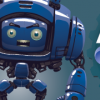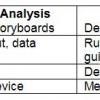 |
User Story Heuristics: Understanding Agile Requirements Agile emphasizes just-in-time requirements rather than upfront preparation. The requirements person—be it the product owner, business analyst, product manager, or someone else—embodies the understanding of what is needed, and the user story represents the work that needs doing. This article details what user stories are (and what they are not).
|
|
 |
ADC West 2015 Keynote: Lean UX: Turn User Experience Design Inside Out When developing products, features, and enhancements, you have to have your customers’ best interests at heart. “We’re not just creating software,” speaker Jeff Patton said. “We’re changing the world.” You need to better understand the people you’re building things for, and the only way to do that is to spend more time with them.
|
|
|
|
Bare Minimum Internationalization of Software Internationalization isn’t only about dealing with other nationalities and languages. It’s about creating software for a multicultural world. Even if the software you’re testing won’t be translated entirely into another language, it still should meet some basic requirements for international visitors.
|
|
 |
Beauty Is in the Eye of the Beholder As a user experience design specialist, clients often ask Jeff Patton to make their software "look better," so it can be successful. But when clients focus primarily on aesthetics, they're often addressing the wrong thing. In this column, Jeff takes a look at common user interface (UI) mistakes and the key concerns software development teams should address to build successful UIs.
|
|
 |
How Early Interface Analysis Reduces Risk Analyzing a project's interface requirements often starts late and focuses--sometimes exclusively—on creating a snazzy user interface. But failing to conduct interface analysis in a early increases the risk of project delays, overruns, and even failure. In this column, Mary Gorman makes the case for investing in interface analysis by explaining what it is and how it reduces the risk in software projects.
|
|
|
|
Looks Do Matter In a previous article published on this site, "Testing the Bold and the Beautiful" (May 2001), the author received many thoughtful comments and questions about the importance of aesthetics in software. This paper was inspired in part from those questions. It clarifies the difference between aesthetic testing and usability testing. The paper makes the business case for "beauty testing" and argues that an ugly UI can undermine the bottom line. It offers methods and a survey-template for successful aesthetic testing. The paper concludes with a list of "Facts and Myths, Dos and Don'ts."
|
|
|
|
Write a Blockbuster Using User Scenarios Big projects require many little user stories. But if these scenarios don't add up to one good story, then you're probably missing out on the big picture. In this week's column, Jeff Patton describes how his team weaves many small tales into a single strong report by identifying key characters and themes.
|
|
|
|
Giving the Human Touch to Software Yogita works as a QA/testing professional with Mindfire Solutions, and has written a number of articles on QA and testing strategies. Yogita is currently exploring thoughts of beauty as an area of testing and its relation to usability. Her role at Mindfire has been to implement Quality processes throughout the organization and build a dedicated testing team. The team recently published a White Paper “Porting projects: Test techniques,” downloadable from www.mindfiresolutions.com. Yogita can be reached at [email protected].
|
|
|
|
Avoiding the Script Cemetery It's frightening how many companies are on their second, third, or even greater attempt to automate their testing—each time junking months or years of effort and work product. Here, test automation advisor Linda Hayes shows the way to avoid having to bury your automation project.
|
|
|
|
Internet Accessibility Ever try to navigate the Web with your eyes closed? Without a mouse? Fifty million Americans are differently-abled, and nearly half of these people encounter difficulties accessing the World Wide Web. The U.S. government recently took steps to tackle the accessibility issue. Here's some coverage of the issue.
|
|

